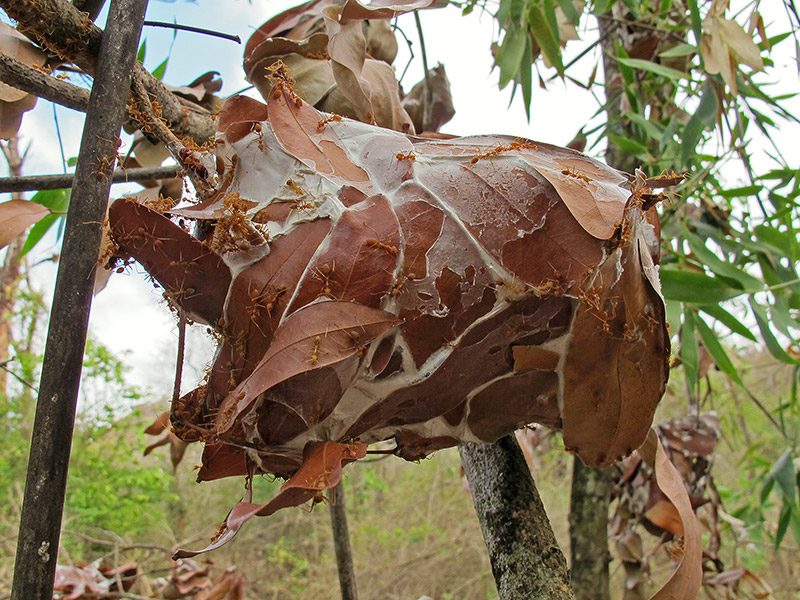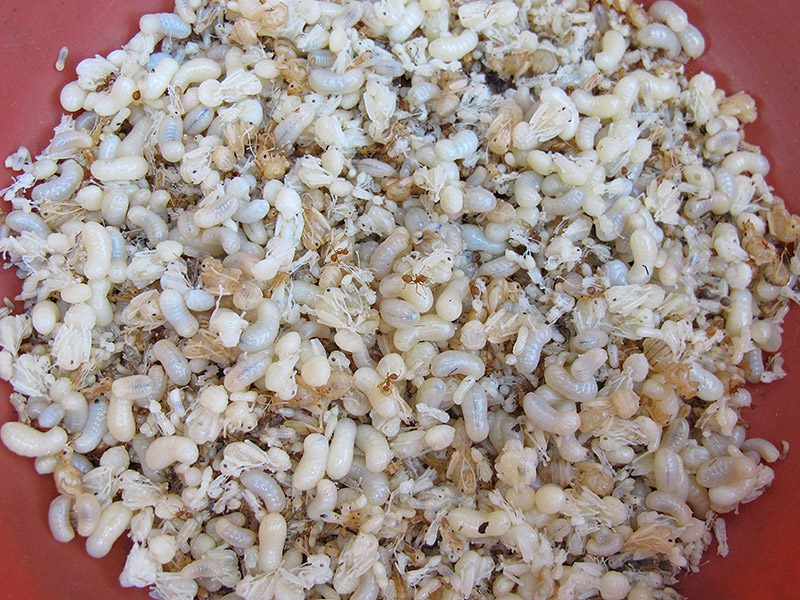Friday May 17, 2013
During Southeast Asia’s dry season in January when the mango is ready to fruit, many people in the Mekong region rotate their dinner menu from wild fish to ant eggs. This is especially common for people in Lao PDR who depend on natural resources for food. Ant eggs are predominantly found in wetland areas with many trees or shrubs. Local people are experienced at finding ant nests and collecting the eggs, as well as simple ways to protect themselves from ant bites. After finding an ant nest, they first use the tip of a bamboo branch to check the quality of the nest, making sure the eggs are large and numerous enough to harvest, and have not yet developed into larvae. If the harvester approves of the eggs’ quality, he or she will hold a bamboo basket or water bucket hanging on a stick and shake the ant’s nest until the eggs fall into the basket.
Many ants will also fall into the basket or bucket with the eggs and may try to attack the harvester. One way to thwart them is to shake the basket repeatedly while walking. Another is placing branches into the basket, letting the ants walk on them, then tossing the branches into the bushes. Taking care not to kill the ants will allow them to lay more eggs. Some people who can afford it may buy tapioca powder to help them get rid of the ants. After harvesting the eggs, local people use them to cook various favorite foods, such as snakehead fish soup or leaf tree (Acacia) soup with ant eggs, fish salad with ant eggs, or simply fried ant eggs. Selling surplus harvest at the market can serve as an important source of income, particularly for women, and the eggs can also be used as fishing bait. Although fish are less abundant during the dry season, people can supplement their diet with ant eggs, then switch to harvesting wild mushrooms and bamboo shoots from April to June.
Insects play a vital role in sustaining food security around the world, according to a report recently released by the United Nations Food and Agriculture Organization. Worldwide, ants and their relatives (wasps and bees) are among the most commonly consumed insects, after beetles and caterpillars. Between 150 and 200 species of insects are consumed in Southeast Asia alone (see Little fishers). Although Westerners largely regard insects with disgust, the report emphasizes that in the rest of the world, insects are not a food of last resort – rather, people eat them by choice for their nutrition and taste. Food can take on many forms for the resourceful.


